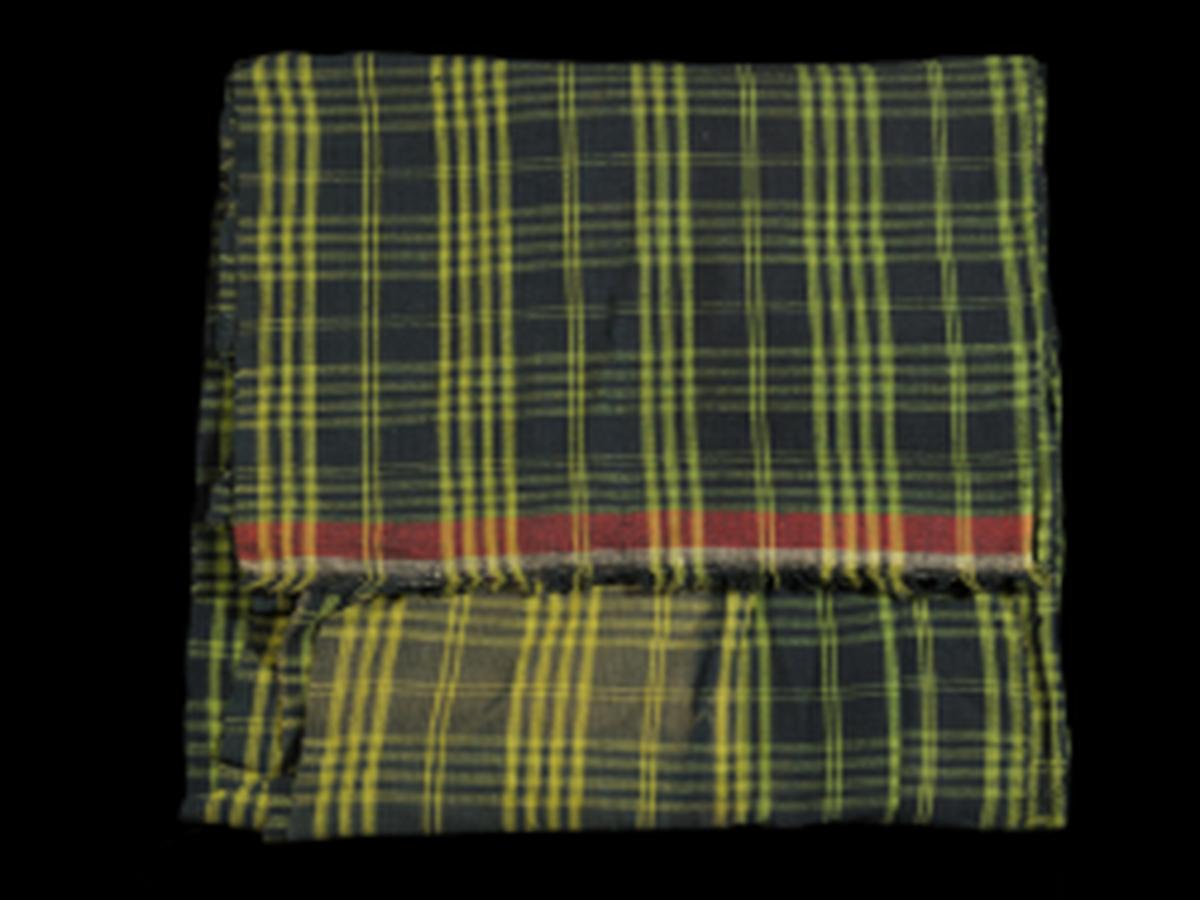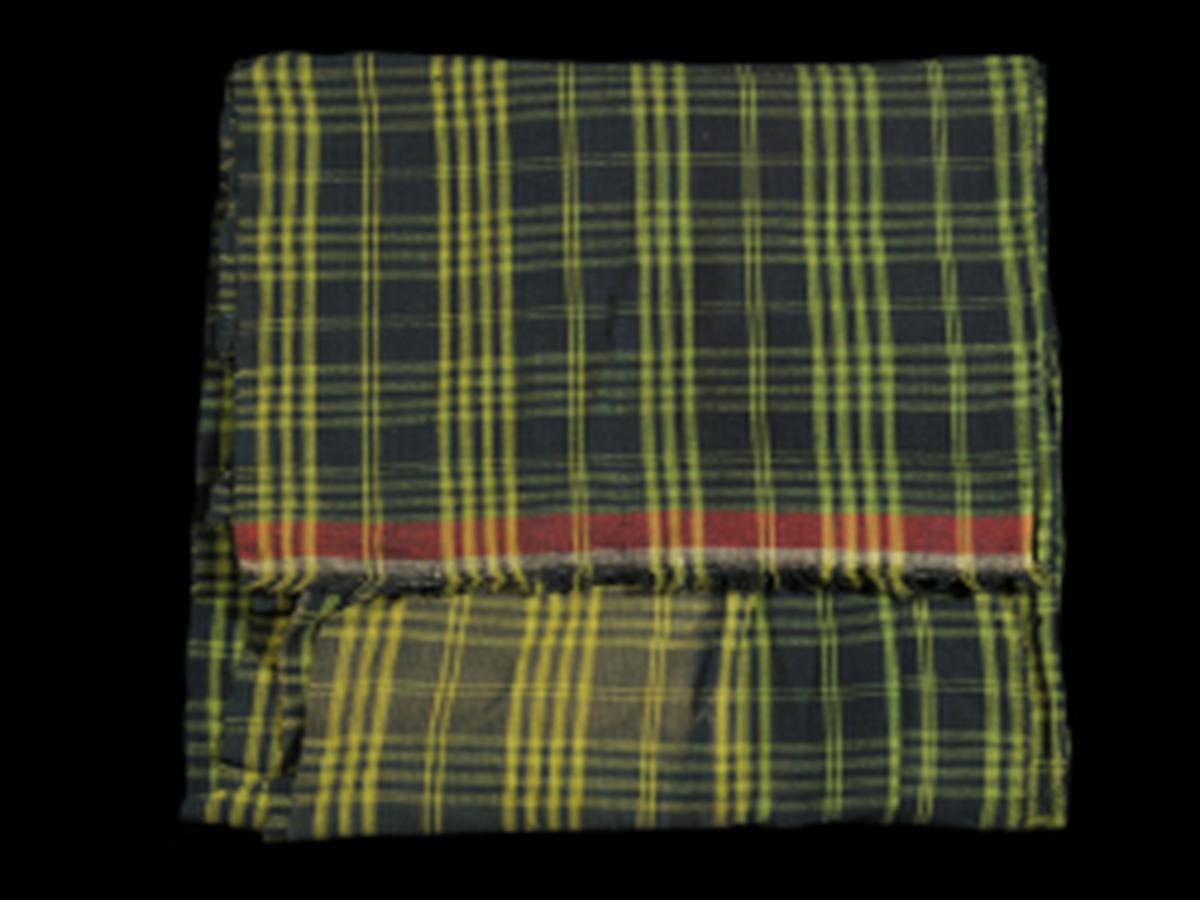State
Tribe Name
Art Type
short description
Khampti Tribe, rich in culture and history, is located in the eastern part of Arunachal Pradesh. They are well known for their very own sets of tradition-spiritual practice and traditional wear. Among the attires of Khampti men is the leafy green cotton cloth which holds cultural significance and is an example of tribal textile craftsmanship. This kind of garment is made of cotton fabric which is favorite of Khamptis in terms of comfort, long-lasting and best suitable with the climate of the region. The cloth has checks of green color over a black base pattern drawing a very bold contrast between the colors and also exhibiting the tendency of the tribe toward rather bright yet sober designs. To wear in the desired length, two pieces of cloth are stitched together, a conventional way of doing in handloom which is suitable for making longer, flexible garments.
Thumbnail

Filter Postion
Left
Filter Background
Off
Theme
Filter Header Image

content
Image

description
Khampti Tribe, rich in culture and history, is located in the eastern part of Arunachal Pradesh. They are well known for their very own sets of tradition-spiritual practice and traditional wear. Among the attires of Khampti men is the leafy green cotton cloth which holds cultural significance and is an example of tribal textile craftsmanship. This kind of garment is made of cotton fabric which is favorite of Khamptis in terms of comfort, long-lasting and best suitable with the climate of the region. The cloth has checks of green color over a black base pattern drawing a very bold contrast between the colors and also exhibiting the tendency of the tribe toward rather bright yet sober designs. To wear in the desired length, two pieces of cloth are stitched together, a conventional way of doing in handloom which is suitable for making longer, flexible garments.
The other features of the cloth range from having a wide red line on one end to integrating an intimidating splash of color and a visual point of reference into the overall design. The red line is meant to give some meaning and symbolism, perhaps associated with energy, vitality, or ceremonial tradition formation in Khampti culture. This cotton cloth generally worn by Khampti men in day-to-day life as well as during special occasions is practically a serviceable item and expresses a very strong idea of identity and continuity in culture. It shows how the Khampti people keep their heritage alive in their textile arts embodied by careful construction and vibrant design.
The other features of the cloth range from having a wide red line on one end to integrating an intimidating splash of color and a visual point of reference into the overall design. The red line is meant to give some meaning and symbolism, perhaps associated with energy, vitality, or ceremonial tradition formation in Khampti culture. This cotton cloth generally worn by Khampti men in day-to-day life as well as during special occasions is practically a serviceable item and expresses a very strong idea of identity and continuity in culture. It shows how the Khampti people keep their heritage alive in their textile arts embodied by careful construction and vibrant design.
Image Mode
landscape
promoted
On
Verified
Off
